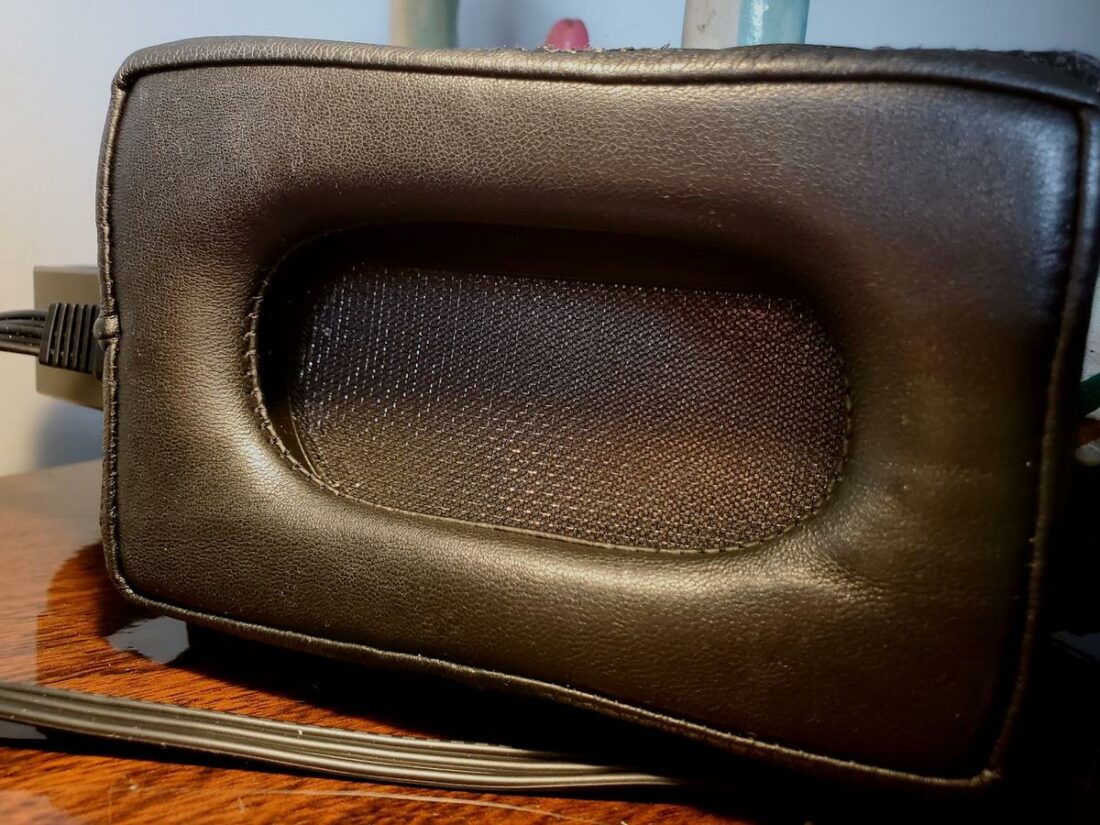The SR-L500 don’t receive much attention as the middle child of the Lambda family, but they may be the best value of the trio.
Over the last couple of months, I’ve been fortunate enough to try out all three members of the Lambda series of headphones from Japanese electrostatic headphone manufacturer Stax: first the SR-L300, then the SR-L700MK2, and now the SR-L500MK2.
Of these three, the SR-L500 may be the least well-known. People who want to try electrostats on a budget are more likely to gravitate to the SR-L300, while those who want the best may consider upgrading to the flagship Lambda, the SR-L700.
- The best resolution available at their price point
- Clear, lucid midrange
- Addictive and ethereal sound
- Balanced sonic presentation
- Best value among all Lambdas
- Good imaging
- Rolled-off, somewhat bloated bass (can be fixed with an easy mod)
- Subpar build quality
- Lack of dynamics
Meanwhile, the SR-L500 have received relatively few reviews from audio publications and decidedly take a backseat to the other two in community discussions, suffering from “middle child syndrome.”
The SR-L500MK2 are currently listed at USD$830 on the Stax website, making them about half the price of the SR-L700MK2, and about twice the cost of the SR-L300.
Company Overview
Stax Audio is a Japanese boutique headphone manufacturer. They were the first company to release electrostatic headphones (1959) and have since maintained a reputation as one of the premier manufacturers of electrostats. When Stax first entered the market, their headphones were leagues better than their competition.
Technical Specification
- Form: Over-ear, open-back
- Driver: Electrostatic
- Frequency Response: 7 – 41,000Hz
- Electrostatic Capacitance: 110pF (including cable)
- Impedance: 145k Ω (including cable, at 10kHz)
- Sound Pressure Sensitivity: 101dB / 100V r.m.s. 1 kHz
- Maximum Sound Pressure: 118dB / 400Hz
- Bias Voltage: 580V DC
- Source plug: 5-pin Stax pro connector
Build

The build quality of the SR-L500MK2 is essentially identical to that of the SR-L700MK2 and very similar to that of the SR-L300.
That is to say, the build quality is relatively poor. Most components are made of plastic, including the headband arc, which feels slightly precarious. Now, the SR-X9000 prove that Stax can make a suitable headband, so perhaps they could consider transferring this design (or a similar one) to the Lambda models.
My pair had some noticeable creaks and pops while putting them on and wearing them, which is concerning.
The exception to the theme of poor build quality is the earpads, which are a very soft, comfortable leather and seem well put together.
Overall, the build and appearance are not huge detractors for me, but those who demand the best will take issue with the substandard construction.
Comfort
The SR-L500MK2, like their siblings, are very comfortable to me. They are light, the earpads are soft, and the headband conforms nicely to the head with no hot spots.
Technology
If you’re unfamiliar with electrostatic technology, do know that these don’t work like standard headphones – they operate with a much higher voltage than most headphones (although, don’t be too paranoid about safety – they operate at a much lower current, hence the high impedance).
As a result, you’ll need a special amplifier. For this review, Stax lent me their SRM-500T.
Historically, electrostatic drivers were known for lower distortion and higher resolution than their dynamic and planar-magnetic counterparts.
However, at this point, planar-magnetic and dynamic headphones can rival electrostatic headphones in terms of resolution. Still, electrostats offer a kind of effortless, airy sound that other technology can only imitate.
They also have drawbacks – it’s much harder to produce headphones with a sense of macrodynamics from these drivers, for example.
Sound

The SR-L500MK2 share the characteristics of other members of the Lambda series: a light, ethereal sound with a slightly recessed lower midrange and bass and a peak at 1.5kHz.
These qualities can be quite addictive, resulting in a unique presentation where sounds seem to materialize from the air in a way that has to be heard to be believed. However, such a presentation is not for everybody since impact, body, and dynamics can be lacking.
Compared to the less expensive SR-L300, the SR-L500MK2 are more balanced across the board, with better midrange tuning, more articulate bass, and smoother, less bristly treble. They are also quite a bit more resolving.
The SR-L500MK2 are probably the most balanced of the modern Lambdas sonically, especially regarding midrange tuning. They trade blows with the SR-L700 when it comes to technical ability while retaining a more even tuning.
The SR-L700 beat the SR-L500 in treble resolution and dynamics with a more engaging sound, but the SR-L500 are more neutrally tuned, with a better midrange.
Technicalities and soundstage
The SR-L500 are simply the most resolving and detailed headphones that can be bought for under USD$1,000 new. This doesn’t necessarily make them the best, but the detail displayed here will be astounding for those coming from mid-fi dynamic headphones.
That means these headphones will never sound confused, even in very busy passages. The sonic picture is effortlessly separated into clearly audible layers, making it very easy to pick out an individual instrument and focus on it. In this way, the SR-L500 easily rival headphones many times their price in detail retrieval.
The imaging is quite good. While the SR-L500 do not have an outstandingly large soundstage (the SR-L700’s and Lambda Pro’s are both somewhat larger), image specificity is very precise, with little smearing going on.
On the other hand, the soundstage is two-dimensional, with most sounds seeming to come from around the face area.
The trade-off is, with all Lambdas, in dynamics: they are overall less dynamic than most headphones at this price range, meaning large changes in volume are slightly squashed. This can lead to an urge to crank the volume, but don’t do it – your hearing is important!
Higher-priced electrostatic headphones like the Stax SR-007 can lend more convincing dynamics with equal or better resolution, but at the price point of the SR-L500, I find the trade-off more than worth it.
Bass
Like the other members of the Lambda series, the SR-L500 struggle with bass reproduction. This is due partially to the limitations of the Lambda driver and partially due to a bass port that was introduced with the new-generation Lambda design.
Most older Lambdas, including even the earliest models, achieved flat bass reproduction into infrasonics with no roll-off. The area between the driver and the ear is completely sealed off on these models. In the new design, a small port has been added, which creates a small mid-bass hump and roll-off below it.
Some users have found a way to plug these holes with Blu-Tak, resulting in perfect extension. Without that modification, the frequency response of the SR-L500’s bass is somewhat lacking.
The bass here also has a somewhat ghostly texture, which will bother those who crave the tactility of dynamic bass response. I don’t mind it so much when listening to classical music or jazz, but with EDM or other bass-heavy genres, these headphones can lack the necessary impact and rumble.

Midrange
As usual with the Lambda series, the midrange tuning is not totally neutral. An ever-so-slight recession in the lower midrange (~300 Hz to 1 kHz) gives the headphones a lucid, clear sound but slightly lacking body. Meanwhile, the somewhat laid-back upper midrange gives the headphones a relaxed sound.
Between these two areas is an area of forwardness at around 1.5 kHz. This gives the headphones a sound that has been called “honky,” or “shouty” – although my preferred term to describe the Lambda sound is “glassy.”
The midrange colorations are most obvious with instruments like the piano, where evenness throughout the frequency spectrum is very important. Certain notes in the piano’s upper registers can come off as too emphasized or wet. This problem is more emphasized on other Lambdas, but it’s still present with the SR-L500.
Recordings with an emphasis around 1.5 kHz may also sound somewhat nasal or “washed-out.”
But make no mistake: despite their flaws, the SR-L500 have an excellent midrange. The “flaws” of Stax Lambdas are less prevalent here than with other Lambdas, allowing the positive qualities of absolute clarity and lucidity to come to the fore.
The result is a fantastically clear-sounding and balanced midrange.
While the midrange may not be “perfect,” it’s closer, in my opinion, than most other headphones.
Treble
Like many other electrostats, the SR-L500 have treble that impresses but can be slightly “spicy,” depending on your tolerance.
True to form, the SR-L500s’ treble is resolving and clean. Details are presented with a certain “effortlessness” that owes to the very low distortion. There’s also a slight emphasis on the air region of the frequency spectrum (that is, very high-pitched sounds above 10 kHz) that lends a sort of “more real than real” quality to the L500’s sound.
The treble is the one region where the SR-L700 significantly overtake the L500 in performance.
Although the L500 have excellent treble quality and resolution for their price, the L700 is better still. The L500 can sound slightly grainy and unrefined in comparison.
However, note that that’s only in comparison to the twice-as-expensive L700. Compare the L500 to any other pair of headphones at this price point, and the L500 will almost certainly come up as the winner.
Where to Buy
Conclusion

Although the SR-L500MK2 aren’t quite as popular as the other two members of the current Lambda lineup, that’s mostly down to marketing and “middle child syndrome.” These absolutely deserve to get more attention, and they even overtake the SR-L700 in certain key areas.
They have an excellently-tuned midrange as well as very good resolution all around. All this comes together in a very well-balanced package. Of the electrostatic headphones I’ve heard, these are among the few pairs (possibly the only pair) I’d be genuinely comfortable with as a daily driver.
And at USD$830 at the time of this writing, the L500 are also a good value. They clearly outdo all other headphone options with an MSRP below USD$1000 in terms of resolution, and they back up that resolution with an outstanding overall sonic presentation.
Of course, the fact that these are electrostatic headphones makes them a niche product, depending on your sonic tastes. The sound could come off as thin or dry to some listeners, and the fact that you need to buy an expensive amplifier to run them means the cost will creep up.
Still, for those who might want to try a pair of electrostats, the SR-L500MK2 receive my highest recommendation. Skip the cheaper options: the L500 are beasts, and with their price tag, they provide a great entry point to the world of electrostatic headphones.
